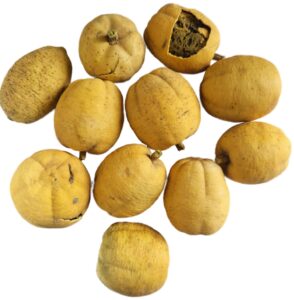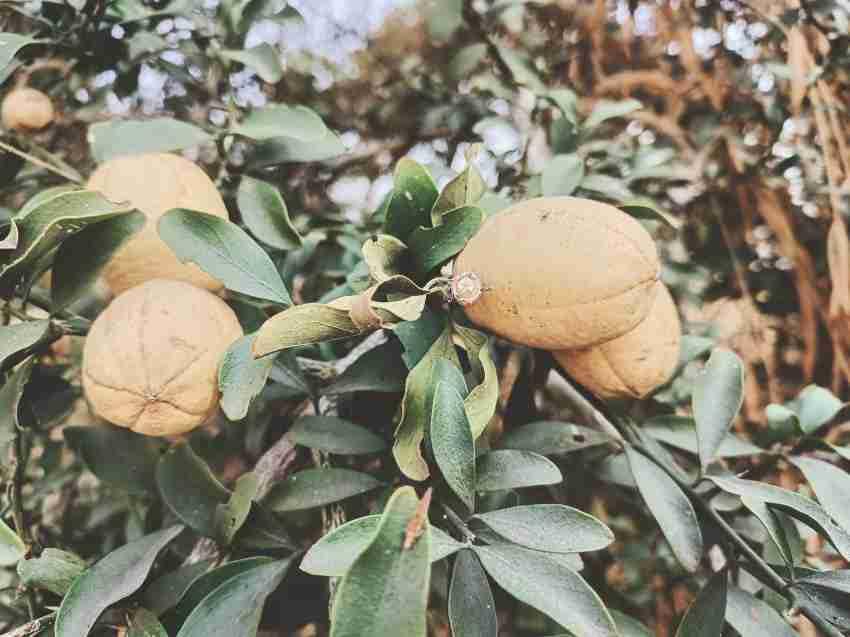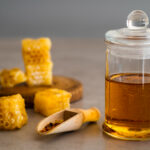
Introduction
Picture yourself wandering through a sun-drenched orchard in Rajasthan, plucking a golden, oval-shaped fruit known locally as Hingot. As soon as you bite into its sweet, jelly-like pulp, you sense something special—this isn’t just another exotic bite. In this post, we dive deep into Hingot fruit benefits, exploring its nutritional prowess, age-old medicinal uses, and fresh ways to incorporate this underappreciated superfruit into modern diets.
What Is Hingot Fruit?
Also called Indian plum, lasura, or Assyrian plum, Hingot (Cordia myxa) is a member of the borage family (Boraginaceae). Native to tropical and subtropical regions of Asia and Africa, its mucilaginous pulp has been prized for centuries in Ayurvedic and Unani medicine. While often harvested wild, cultivation is on the rise thanks to renewed interest in its health-promoting properties Tropical Plants.
Nutritional Composition of Hingot Fruit
Nutrient Profile (per 100 g dry weight)
| Component | Amount |
|---|---|
| Carbohydrates | 57.08 g Research Square |
| Protein | 8.32 g Research Square |
| Fat | 2.20 g Research Square |
| Fibre | 25.70 g Research Square |
| Ash | 6.70 g Research Square |
| Sodium | 1.62 mg/g Research Square |
| Potassium | 7.83 mg/g Research SquareScienceDirect |
| Calcium | 0.46 mg/g Research SquareScienceDirect |
| Iron | 0.51 mg/g Research SquareScienceDirect |
| Zinc | 0.35 mg/g Research SquareScienceDirect |
| Phytic Acid | 355 mg PMC |
| Oxalic Acid | 250 mg PMC |
This rich macronutrient profile—especially its high fibre and protein in a fruit—makes Hingot stand out among underutilized crops.
Medicinal Marvels: Hingot Fruit Benefits
Rich Source of Antioxidants
Hingot fruit extracts have demonstrated potent antioxidant activity, thanks to tannins, flavonoids, and phenolic acids PMC. A 2022 study via NCBI highlights its capacity to neutralize free radicals and support cellular health.
Soothes Respiratory Ailments
The mucilaginous pulp contains plant sterols that coat and soothe irritated airways, offering natural relief from coughs and sore throats—an age-old remedy in Unani practice Biodiversity.
Anti-inflammatory & Analgesic Properties
Preliminary phytochemical screenings reveal glycosides, saponins, and sterols in Hingot that contribute to anti-inflammatory and pain-relief effects, comparable to mild analgesics ResearchGate.
Cardiovascular Support
Compounds in Hingot exhibit anti-hypertensive effects, helping regulate blood pressure and reducing oxidative stress on blood vessels, as shown in animal studies Slurrp.
Skin & Wound Healing
Topical applications of fruit pulp and bark powder promote faster wound closure and combat skin infections, thanks to its antimicrobial and anti-parasitic constituents Biodiversity.
Gastrointestinal Health
The high soluble fibre content supports healthy bowel movements, while the fruit’s anti-ulcer and hepatoprotective actions help maintain gut lining integrity and liver function PMC.
Potential Anti-Cancer & Hepatoprotective Effects
Limited studies suggest Hingot extracts may exert anti-cancer activity in vitro and protect against liver damage—an exciting frontier for future research PMC.
Hingot Fruit vs. Common Fruits: A Nutritional Showdown
| Feature | Hingot | Mango | Plum |
|---|---|---|---|
| Antioxidant Richness | ✔ High PMC | ✔ Moderate | ✔ High |
| Throat-Soothing Mucilage | ✔ Yes Biodiversity | ✖ No | ✖ No |
| Anti-hypertensive Activity | ✔ Yes Slurrp | ✔ Yes | ✖ No |
| Fibre (Dry Weight) | ✔ 25.7 g Research Square | ✖ ~4 g | ✖ ~7 g |
| Protein (Dry Weight) | ✔ 8.32 g Research Square | ✖ ~3 g | ✖ ~4 g |
This comparison shows why Hingot is emerging as a powerhouse among both exotic and familiar fruits.
Incorporating Hingot into Daily Life
- Fresh Consumption: Enjoy the jelly-like pulp raw for a sweet, tangy snack.
- Smoothies & Juices: Blend Hingot pulp with banana and yogurt for a throat-soothing smoothie.
- Pickles & Chutneys: Turn unripe fruit into spicy, tangy pickles—a staple in Rajasthani cuisine.
- Herbal Teas: Dry slices and steep in hot water with a touch of honey to calm coughs.
- Baked Goods: Replace part of your flour with Hingot fruit powder in breads or biscuits for added nutrients PMC.
Conclusion
From its remarkable nutrient profile to its proven medicinal properties, Hingot fruit benefits extend far beyond its unique taste. Whether you’re seeking natural remedies or innovative culinary twists, this underappreciated superfruit deserves a place in your kitchen—and your wellness routine.
Ready to explore more? Share your Hingot recipes and experiences in the comments below, subscribe to our Fruit Nutrition Guide, and sign up for our newsletter to get the latest on exotic fruits and health tips!


